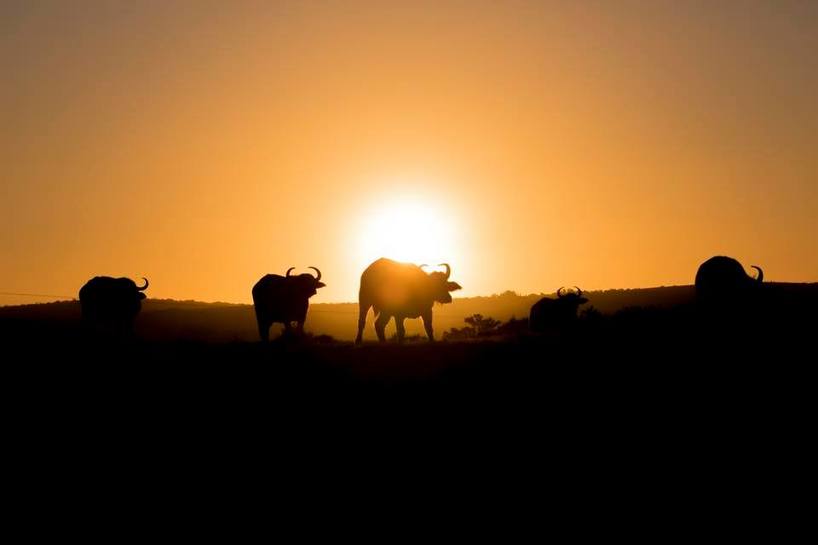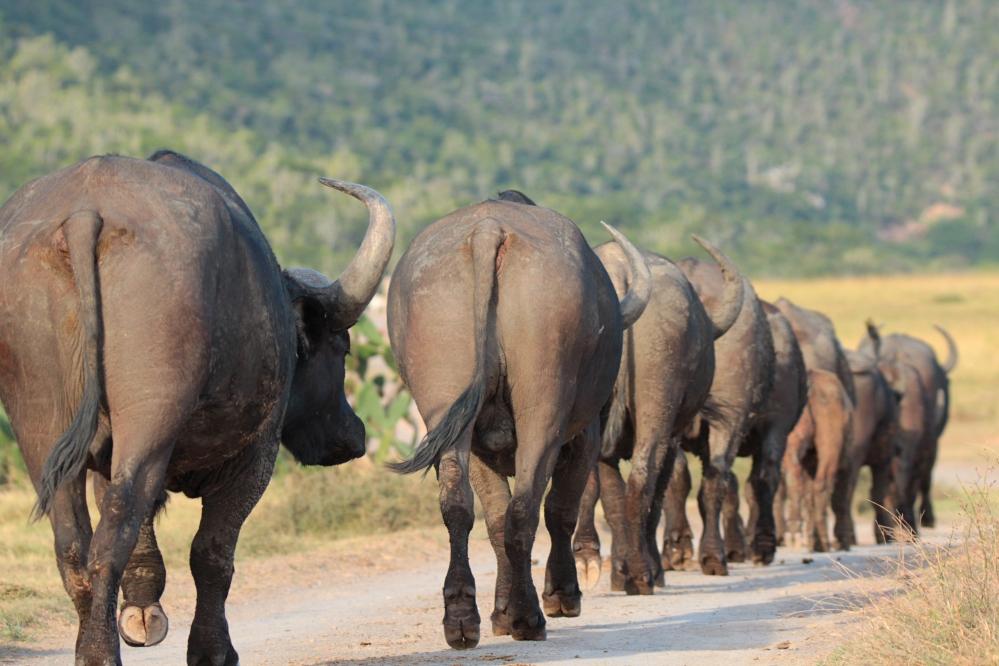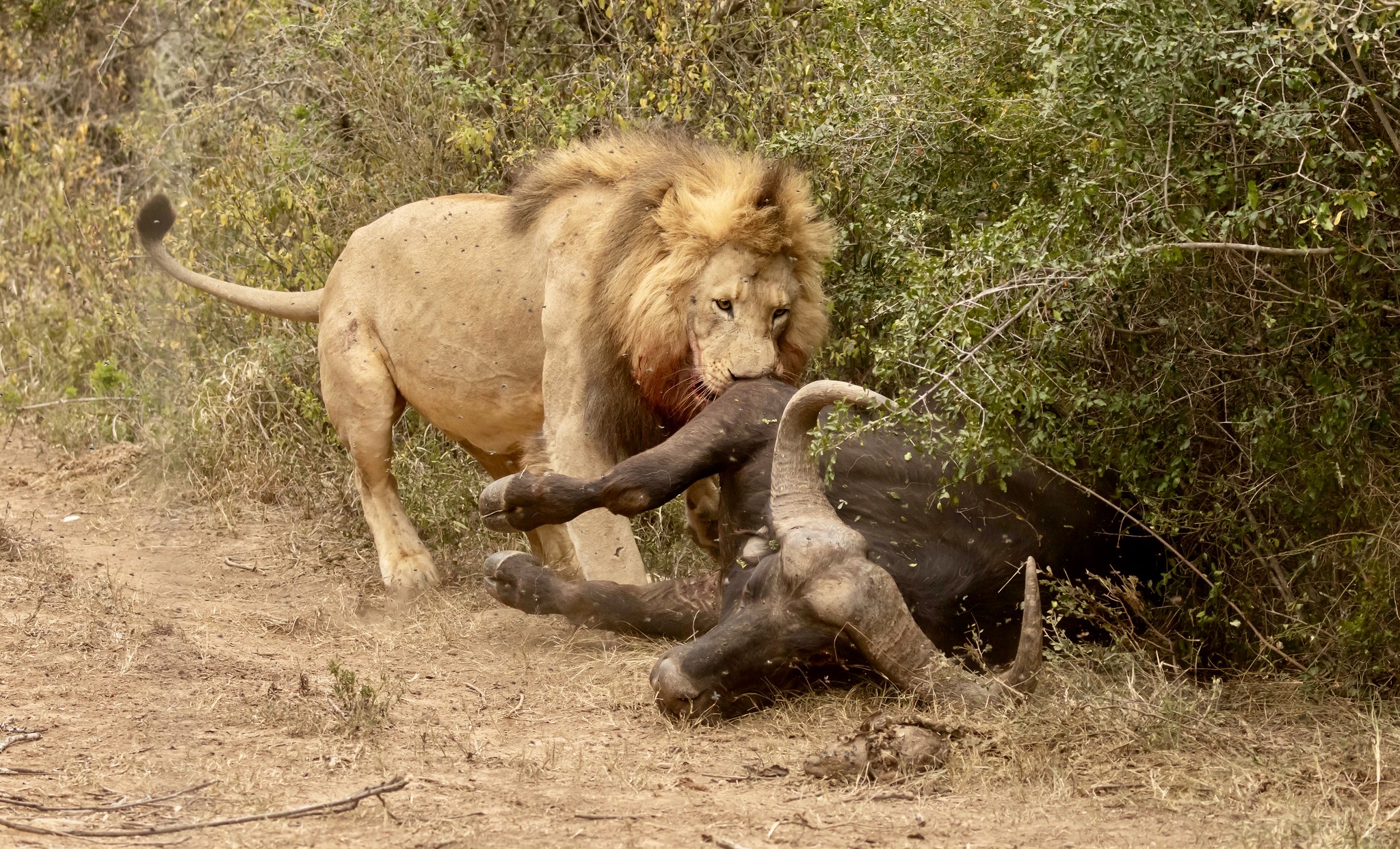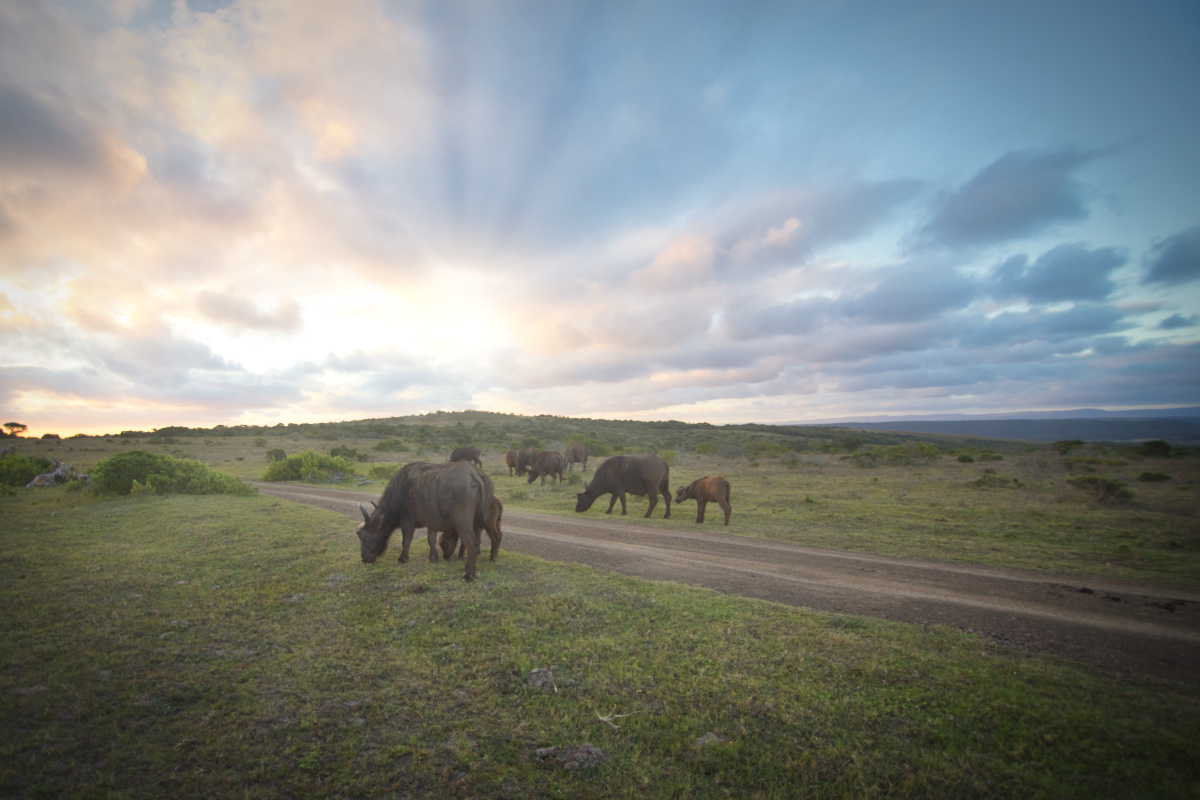10 Fascinating Facts About Cape Buffalo

Safari guests visiting Kariega Game Reserve in South Africa often ask to see the Big 5 - lion, leopard, rhinoceros, elephant, and Cape buffalo. The term Big 5 was originally used by hunters, and refers to the five most difficult African animals hunt on foot. Although no hunting is allowed on our private game reserve, the expression "Big 5" is regularly used by safari guests.
One of the most commonly seen members of the Big 5 is the Cape buffalo. These large bovids can regularly be spotted as they graze in herds on the African plains. We have included 10 fascinating facts about Cape buffalo.

10 Fascinating Facts About Cape Buffalo
- There are five subspecies of buffalo in Africa: Cape buffalo, Congo buffalo, Sudan buffalo, Nile buffalo and Virunga buffalo. The subspecies found at Kariega Game Reserve is the Cape buffalo, which is the largest of all the buffalo subspecies.
- A cow or female Cape buffalo can weigh up to 530 kg (1168 lbs) and a bull can reach up to 830 kg (1830 lbs).
- Buffaloes prefer the stay in large groups. The collective term for a group of buffalo is called a herd but can also be called a gang, troop or an obstinacy.
- Buffalo calves suckle from between the back legs of their mothers. This is an adaptation to help make feeding easier for the calf as their mother, and the rest of the herd, is on the move all the time.
- The Cape buffalo is sometimes referred to as the mafia of the bush. They have the tendency to take revenge when messed with and have been known to circle back, stalk and attack or kill hunters. Talk about the hunter becoming the hunted!
- You can distinguish between adult males and females by looking at their horns. If the base of their two horns come together and form a solid structure (called a boss) then it is a male. The horns of an adult buffalo cow don't touch. When male Cape buffaloes fight they use their horns and their massive muscular bodies to administer heavy blows to their opponents.
- Buffalo are excellent swimmers and won't hesitate to cross a river to escape a predator or to reach new grazing lands.
- A buffalo has a four-chambered stomach. They are called bulk feeders as they need to eat a large amount of grass to sustain their body size. They also need to drink about 40 litres of water per day to keep their digestive system operating optimally and ensure that they can produce enough saliva to swallow and regurgitate their food for re-chewing.
- Buffalo have to constantly manage the external parasites on their bodies. This is done by wallowing in the mud to kill off ticks and other parasites on their skin. They also have a secret weapon to help keep them clean. They allow oxpecker birds to eat the ticks on their legs, tails, backs, inside their ears and even inside their noses!
- The main predator of Cape buffaloes is the lion. It usually takes quite a few lions to bring down an adult buffalo. Buffalo will defend themselves fiercely and are capable of killing a lion.

We hope you have enjoyed learning more about these big bulky bovines. We look forward to welcoming you, your family and friends to Kariega Game Reserve to show you these and many other unique creatures during your safari. If you would like to make an enquiry or booking at any of our five safari lodges please contact us via our online form.
Share your Cape Buffalo Photographs

If you have been to Kariega Game Reserve before and had the opportunity to see Cape buffaloes, please share your photographs with us and we will enter them into our annual Kariega Facebook Photo Competition. This year's competition opened on 1 May 2020 and will close on 30 April 2021. Wildlife photos from any Kariega safari are welcome. Photos do not have to be taken during this time period. The prize is an all-inclusive two night stay for two at Ukhozi Lodge.
To keep up to date with Kariega wildlife follow us on Facebook, Instagram, Twitter and YouTube. You can also subscribe to our blog so you will never miss out on news and stories from Kariega Game Reserve.
Photo credits: Kariega guide Jo Haesslich. Kariega guests Harold Moses and Fabio Franciosa.









